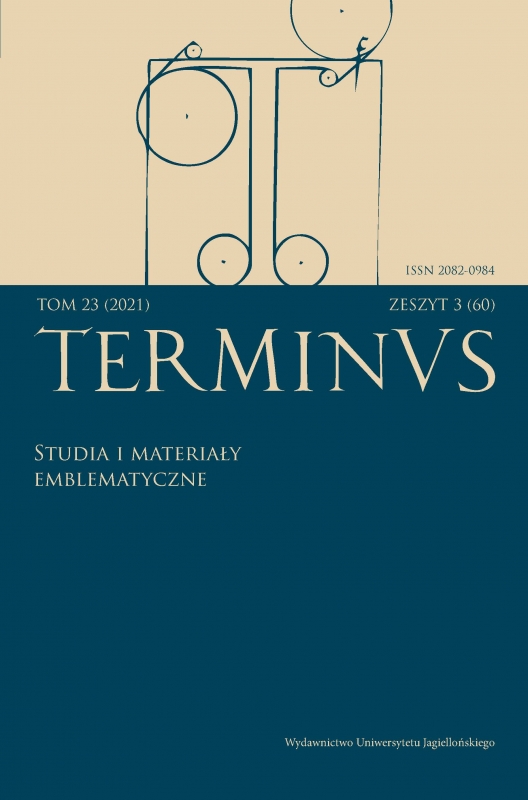Status teoretyczny emblematu w polskiej dekoracji
The Theoretical Status of the Emblem in Polish Decorative Art
Author(s): Magdalena Kinga GórskaSubject(s): Local History / Microhistory, History of Art
Published by: Wydawnictwo Uniwersytetu Jagiellońskiego
Keywords: emblem theory; emblem studies; applied emblematics; genology
Summary/Abstract: This paper argues that the theoretical status of the emblem in decorative art has methodological significance in emblem studies and art history, comparable to its status in the so-called book’s editorial frame. This claim is justified in the historical and theoretical tradition of defining emblems in the sources. The departure point for the author’s considerations comes from the findings of applied emblematics, and its foundation is provided by the theoretical sources describing symbolic genres (scil. emblema, symbolum, hierogliphicum) published in Poland from the 16th to the 18th century, including books of poetics, rhetoric, dictionaries and compendia. The first part of the article presents an overview of research on decorative emblems in Poland, together with factors responsible for the scarcity of such studies, including the lack of symbolic typology of the decorations, and the division into literary and non-literary studies, motivated by the philological roots of emblem studies. It is noted that the emblemata in the so-called book’s editorial frame and those in decorations should be studied separately, as the latter are of ornamental nature, and require a distinct order of perception, explication, and the recipient’s role. Besides, it is pointed out that the anachronism of the 16th-century formulae of emblema raises problems for the genological classification of Polish decorations, and so does the inter-genre, compendiumtype pattern of symbolism dominant in the 18th century. The second part of the article discusses the definition of the emblema, focusing on its details relevant for the artistic practice and present-day genre classification, such as technique, composition, the content of the image, which is confronted with Polish historical materials. The analysis carried out in the paper supports the claim that providing a genelogical definition of a work of art sheds light on its artistic rendition and aesthetic value. It also enhances the perspective on emblem studies, the workshop of an emblem artist and the reception of the emblem. Additionally, it enables the verification of synthetic accounts and research practice, offering a profound reflection on the chronology and previous conceptions of the emblem. Finally, it helps to formulate postulates, which can be useful for the methodology of literary emblem studies.
Journal: TERMINUS
- Issue Year: 23/2021
- Issue No: 3 (60)
- Page Range: 227-258
- Page Count: 32
- Language: Polish

